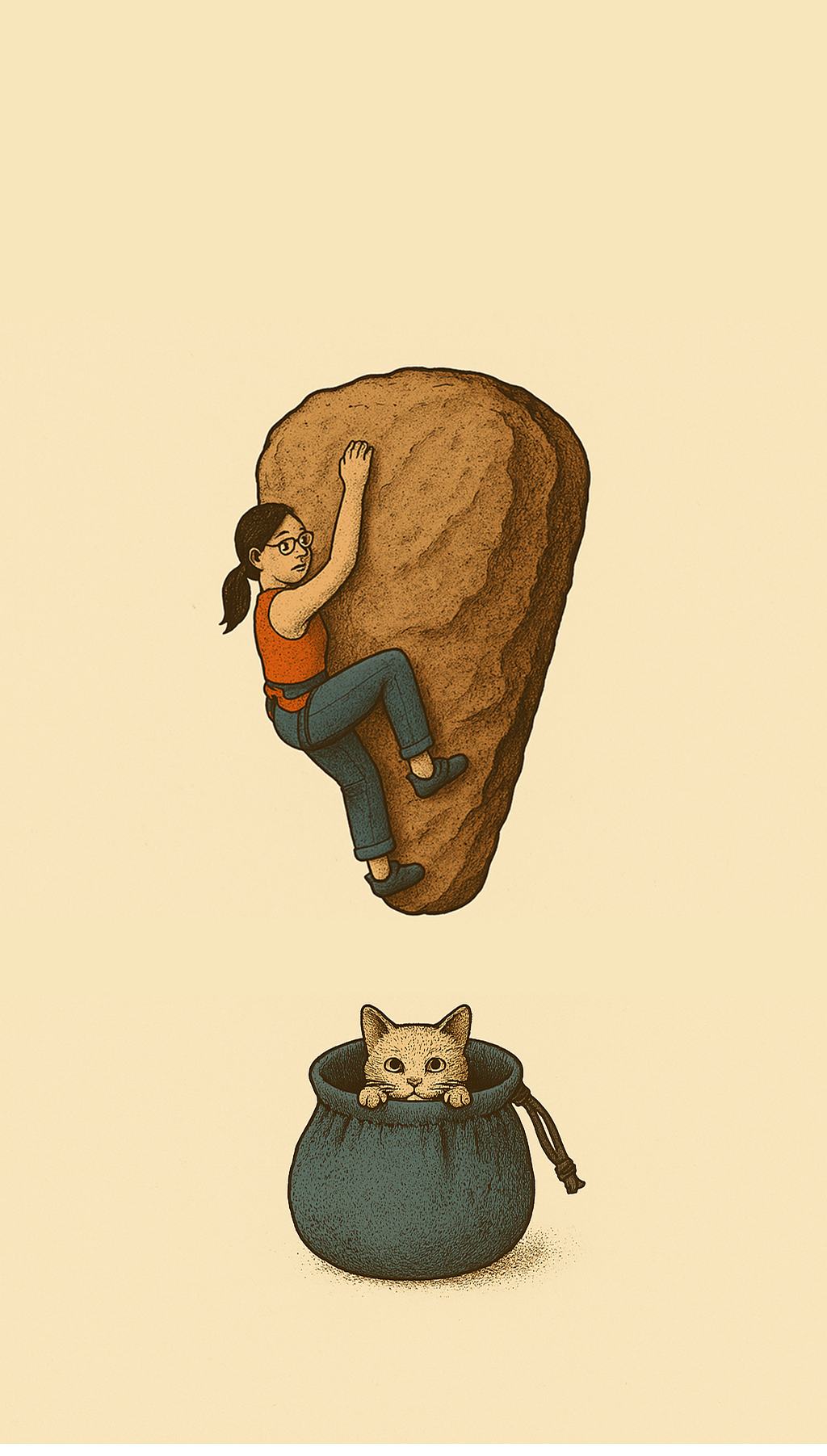“Optical Occlusion”: Trust Yourself to See and Direct Your Feet By Making it the Only Option
2–5 minutes of focused practice.
This is a simple, powerful way to retrain your visual attention to prioritise your feet—one of the most under-trained, under-noticed areas in climbing movement.
Set-up:
Make sure you're in a safe, familiar, clear space with no trip hazards.
Cover the upper ~80% of your visual field so you can only see the bottom portion—where your feet appear.
Get creative with what you use: a scarf, an eye mask, a piece of clothing, or even (like me) a shallow cardboard grocery box you can lower over your head.
Practice:
Stand quietly and simply watch your feet on the ground.
Shift weight, balance, and gently walk around.
Hold furniture or fixtures for stability if needed, but stay aware of where you are.
Purpose:
This trains your brain to trust, integrate, and use the lower part of your visual field—the very field you rely on when climbing. On the wall, efficient footwork depends on keeping your head and eyes relatively neutral or with a subtle downward tilt, rather than bobbing or jerking to re-focus between hands and feet.
By occluding the rest of your vision, you force your attention to what's “down below,” which is often ignored in daily life. You’re telling your nervous system: this is important. In a controlled, safe environment, your brain has to learn to extract and prioritise this information.
Benefits for climbing:
More stable head and eye positions while route-reading and climbing.
Greater salience (importance) attributed to foot placement cues.
Improved trust in what you see below you—reducing unnecessary adjustments or hesitations mid-move.
This is not about forcing perfect precision immediately. It’s about giving your brain a chance to learn that it can rely on those visual cues—and practicing that trust in a deliberate, mindful way.
